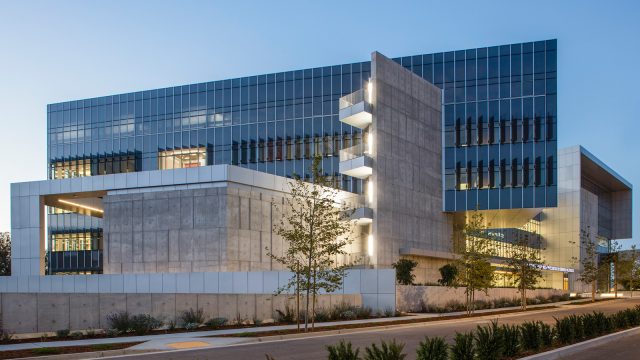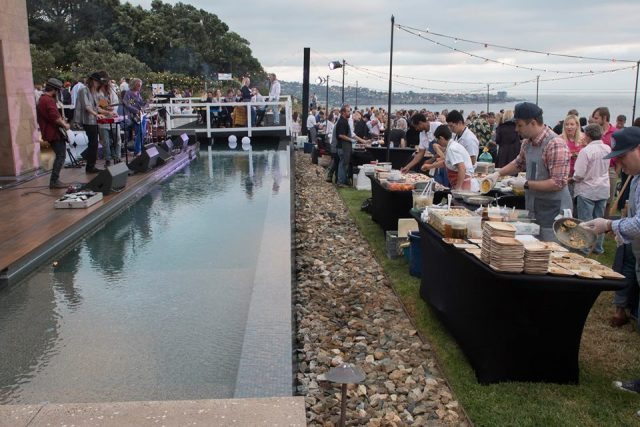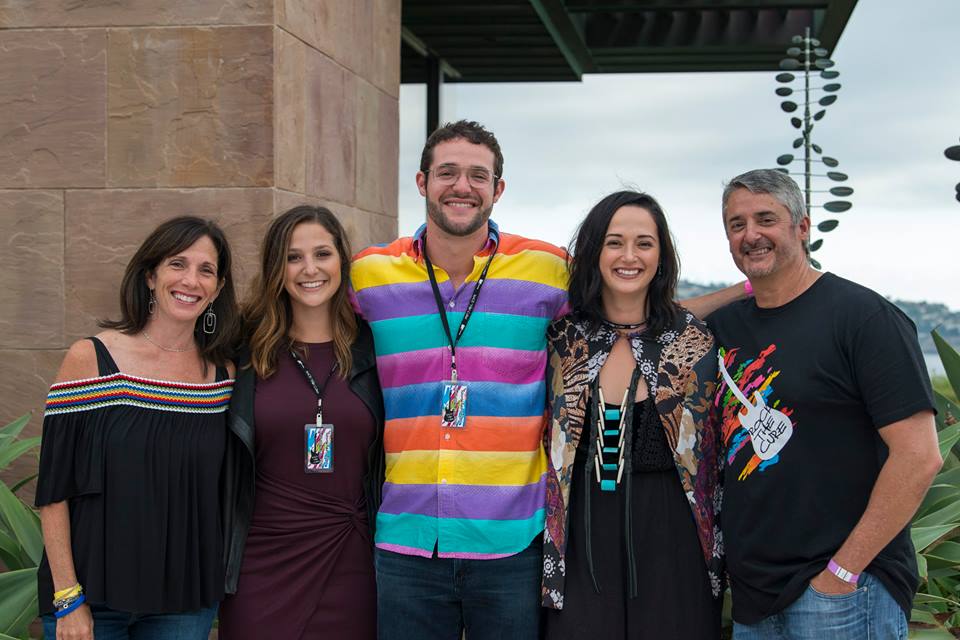When you ask Google about Steve Altman you’ll likely learn all manner of things about intellectual property, computer chip processors and San Diego’s
When you ask Google about Steve Altman you’ll likely learn all manner of things about intellectual property, computer chip processors and San Diego’s largest company, Qualcomm.
You’re also likely to learn about Rock the Cure and the philanthropy that the Altman family has participated in when it comes to combating a disease that has infiltrated at least three generations of Altmans, as well as the many financial contributions the Altman family has personally made to San Diego State University and UC San Diego.
Depending on your geographic location and your browser’s knowledge of your search preferences, a Google search may also reveal Altman’s involvement in a Major League Soccer expansion bid that is tethered to a mixed-use development project in the heart of San Diego’s Mission Valley known as SoccerCity.
What Google likely won’t be able to tell you is how or why an extraordinarily successful businessman with two brothers, a wife, three children, a background in law and technology, and an affinity for philanthropy was drawn into what Twitter will tell you is a greedy land grab made by rich sharps from La Jolla who have descended upon San Diego with devilry in mind.
Fortunately for soccer fans with aspirations of landing a Major League Soccer franchise, Steve Altman told me about the SoccerCity deal and his involvement in it. On a bright and crisp Tuesday morning, I sat down with Altman to learn more about who he is as an individual and why I and the rest of my fellow citizens of San Diego should care.
I learned that despite graduating from the University of San Diego with a degree in law, Altman’s professional ambition up until his junior year of undergraduate studies at Northern Arizona University was to be a basketball player.
I learned that growing up in Tucson, Arizona, Altman’s best friend was his younger brother and during their summers they would bus to the University of Arizona where they would break into the gym and start playing basketball before it opened, play all day, hitch a ride home with their mom on her way back from work, eat dinner and then play in the driveway until 11:00 pm before going to bed and repeating the cycle the next day.
Basketball was everything to Altman as a kid and upon graduating from high school, he initially went to a local junior college and played on the school team there before transferring to Northern Arizona University to reunite with his younger brother who had earned a scholarship to play there. Joining the team and NAU, Altman the elder racked up a noteworthy 5 career points and was 1 for 8 from the field all time. His younger brother was a four-year starter and was later inducted into NAU’s hall of fame.
“Until the end of my junior year I was convinced I was going to be a pro basketball player,” recalled Altman. “I loved it and could play with anybody but I didn’t get much of chance at NAU and I realized it wasn’t going to happen. It was fortunate that I went to junior college before I went to NAU because when I was there, school wasn’t important to me. Basketball was. By the time I got to NAU though school was important to me.”
Having initially deciding to pursue a career as a parole or probation officer, Altman decided to major in Police Science and Administration. Upon a recommendation from a professor with whom Altman had a close relationship, he decided to attend law school and was admitted to the University of San Diego where he excelled, and decided he wanted to be a business lawyer. Altman landed a job with Gray, Cary, Ames & Frye (which later become DLA Piper), where he specialized in intellectual property, mergers and acquisitions, securities, and general corporate matters.
As I’ve learned from my older sister and now Altman, and what I presume is something that most other young lawyers can attest to, the first few years of being a lawyer at a large firm can be tough. After three years in the trenches, Altman decided he didn’t want to work for a law firm. Instead, he wanted to work for a company where he could learn how to grow a business. His newly wed wife Lisa (also a graduate of USD Law School) had recently been hired as the first-ever attorney at Qualcomm and Altman followed her to the company that would come to shape much of the Altman family’s lives. For 24 years Altman helped build Qualcomm into the powerhouse that it is before retiring in January of 2014.
You remember it was Altman’s mother who picked him and his brother and buddy up from U of A during those summers on her way home from work? There’s a reason for that.
“Type 1 diabetes is a major disease that has afflicted people in my family from as far back as I can remember,” Steve told me. “My father got it when he was four years old. He’s still alive. He’s 85. There are probably hardly any type 1 diabetics who have lived as long as he has. When I was seven or eight he went blind in both eyes. Years later he got laser eye treatment and got his eyesight back in one eye and maintained it ever since, but it was a frustrating time for the family.
“When my younger brother Jeff was 12 he contracted it. My older brother and I don’t have it but Jeff does. When we were kids we considered ourselves the ‘lucky ones’ and Jeff the ‘unlucky one.’ Fast forward and now as adults with families, my older brother has two kids and his youngest got type 1 diabetes when she was seven and two of my three kids have type 1. And my younger brother Jeff who has it, his two girls don’t. So he went from being the ‘unlucky one’ to the ‘lucky one’.
“I don’t get much involved in politics but we do get involved very much on the charitable side of things. There are a tremendous amount of compelling charitable causes out there, but our focus has primarily been to allocate our donations towards type 1 research or things related to that.

“We don’t really like to put our names on things. We’ve done it once for the Altman Clinical and Translational Research Institute at UCSD which is working to find cures for Type 1 diabetes and many other types of diseases. We made a large donation there to make sure that the building got built. We liked that because we ask our friends to support our cause and we felt it was important to put our money where our mouths are.
“We have unfortunately come to learn that there is nothing worse as a parent than to see your children impacted by a disease. We are hopeful that the ACTRI will help find cures for many diseases and are proud to have played a small part of that.
“When my son Andy was first diagnosed we found an organization called the Juvenile Diabetes Research Foundation. They raise money and essentially it all goes to research for a cure. We got connected with them and started going to their charity gala events.
“But after several years of attending their black tie galas, we decided we wanted to do something different to raise money for diabetes research for a couple of reasons. One, we were uncomfortable asking our friends each year to support our cause. And two, I hate dressing up. My wife is always trying to buy me nice clothes and I’m always trying not to wear them.
“We wanted to do something different than the usual gala. So we decided we’d host our own event at our house. We made it what we like. Dress casual. It’s just a big party. We’ll ask you for a donation before you get there and once you get there it’s just a celebration.
“We called it Rock the Cure. First year we had Pat Benatar. We had 10-12 restaurants around the property and some local vendors. And people came had a great time and we raised something like $200-300k. We just had our tenth year, 25 restaurants and vendors, we had the Doobie Brothers and the Struts come out and perform and because it was our last year we hired a barge to shoot off fireworks and raised about $1.3 million with over 600 people attending.

“When we started Rock the Cure, we told ourselves that if it worked, we would host it for ten years. My wife really took it on and did most of the work herself. It became a great event but my wife really did the bulk of the work. I would invite people here and there to come support, but she spent thousands of hours and late nights planning everything and communicating and coordinating with everyone. It was a tremendous amount of work and stress on her and, even though she wanted to continue hosting it, I was worried about the toll it was taking on her. I couldn’t be more proud of her though. Over the 10 years, we raised more than $7 million for type 1 diabetes research.”
How does any of this relate to Major League Soccer and the SoccerCity project put forth by FS Investors?
Mike Stone, the principal at FS Investors and Steve Altman met at a charity golf tournament a few years back and hit it off. They clicked right away and when Altman decided to retire from Qualcomm, Stone offered Altman space at his La Jolla based office, which Altman duly accepted. Remaining active in retirement is something that was important to Altman.
“I didn’t want to retire from Qualcomm and become someone that just sleeps in and doesn’t do anything productive. After leaving Qualcomm, it was important to me that I continue to keep my mind active and contribute. Investing in new or existing businesses and working with entrepreneurs interests me. Despite my years at Qualcomm, I still have much to learn. Mike invests in a lot of different things and a tremendous amount of deals and investment opportunities get presented to him. And of course, with my background at Qualcomm, I get approached by a lot of companies looking for investors or guidance. I have enjoyed immensely learning new things from Mike and co-investing with him on a variety of different deals.”
Speaking of Altman’s connections, in 1999 while he was still working at Qualcomm, Altman was approached by San Diego State University’s head basketball coach Steve Fisher with the idea of supporting SDSU athletics through the formation of a Director’s Cabinet. For a basketball-crazy character like Altman, it was an easy decision to make.
“I don’t know if you’ve ever met Coach Fisher,” Altman reflected, “but he is as class an act as you will ever find. So when he asked, I completely bought in and became a founding member of their Directors Cabinet, had court-side seats and went to every game I could go to. We have also hosted many fundraising events for SDSU athletics at our house. Early on it was tough but always fun to watch and then they became good and it was one of the best shows in town in my book. Along the way, I got to know the people at SDSU fairly well, mostly on the athletic side, but also got to know some of the administration.
“One day Mike came to me and asked what I thought about the idea of bringing MLS here to San Diego. While I was interested in the idea at that time, I very much liked the fact that it solved a major problem that SDSU’s football program would face if the Chargers left. I didn’t know a lot about soccer. I knew there was a lot of passion for it but I hadn’t realized just how much until this thing started. That’s been one of the best things about this whole process and that’s what inspires me the most now. Meeting such a diverse group of good people and so many young and passionate soccer fans. I want to see our city get MLS for them.

“SDSU was very much on board initially with what we proposed and I was very proud of the fact that my friends and I would play a major role not only in doing something that we think is very positive for our City but also that provided a much better experience and atmosphere for SDSU football. Somewhere along the way, SDSU backed away from a joint proposal and has since put forward statements characterizing the proposal which we believe are fundamentally inaccurate.
“People ask me all the time why SDSU isn’t fully supportive of the Soccer City plan. I honestly don’t know the answer to that question. I have tried multiple times to get both sides and their advisors to sit in the same room and talk with the hope that we can at least understand where and why our positions parted. SDSU has refused my request. The inability to engage SDSU in a meaningful dialog is personally very disappointing and perplexing to me. This is too important an issue for our City and the university to give up. Ultimately, should the Soccer City initiative pass, I remain confident that it will be a great thing for the university.”
